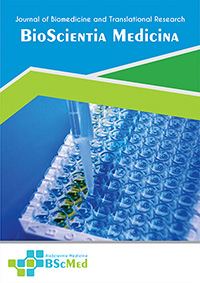Main Article Content
Abstract
Background: Kidney aging is an inevitable physiological process characterized by a progressive decline in renal function, increased oxidative stress, and chronic low-grade inflammation. Superoxide dismutase (SOD), a key antioxidant enzyme, plays a crucial role in mitigating oxidative damage. This meta-analysis aimed to comprehensively evaluate the association between SOD levels/activity and markers of oxidative stress, inflammation, and renal function in the context of kidney aging.
Methods: A systematic search of PubMed, Scopus, and Web of Science databases was conducted for relevant studies published between 2013 and 2024. Studies investigating the relationship between SOD (SOD1, SOD2, SOD3) and kidney aging in humans were included. Data on SOD levels/activity, oxidative stress markers, inflammatory markers, and renal function parameters were extracted. Random-effects models were used to pool the standardized mean differences (SMD) and 95% confidence intervals (CI).
Results: Nine studies with a total of 1,245 participants were included in the meta-analysis. Pooled analysis revealed a significant negative association between SOD activity and markers of oxidative stress (SMD = -0.85, 95% CI: -1.20 to -0.50, p < 0.001). Similarly, SOD activity was inversely associated with inflammatory markers (SMD = -0.62, 95% CI: -0.95 to -0.29, p < 0.001). Furthermore, a significant positive association was observed between SOD activity and eGFR (SMD = 0.78, 95% CI: 0.41 to 1.15, p < 0.001).
Conclusion: This meta-analysis provides compelling evidence that SOD plays a critical role in mitigating oxidative stress and inflammation in kidney aging, contributing to the preservation of renal function. These findings highlight the potential of SOD as a therapeutic target for age-related kidney diseases.
Keywords
Article Details
As our aim is to disseminate original research article, hence the publishing right is a necessary one. The publishing right is needed in order to reach the agreement between the author and publisher. As the journal is fully open access, the authors will sign an exclusive license agreement.
The authors have the right to:
- Share their article in the same ways permitted to third parties under the relevant user license.
- Retain copyright, patent, trademark and other intellectual property rights including research data.
- Proper attribution and credit for the published work.
For the open access article, the publisher is granted to the following right.
- The non-exclusive right to publish the article and grant right to others.
- For the published article, the publisher applied for the Creative Commons Attribution-NonCommercial-ShareAlike 4.0 International License.





